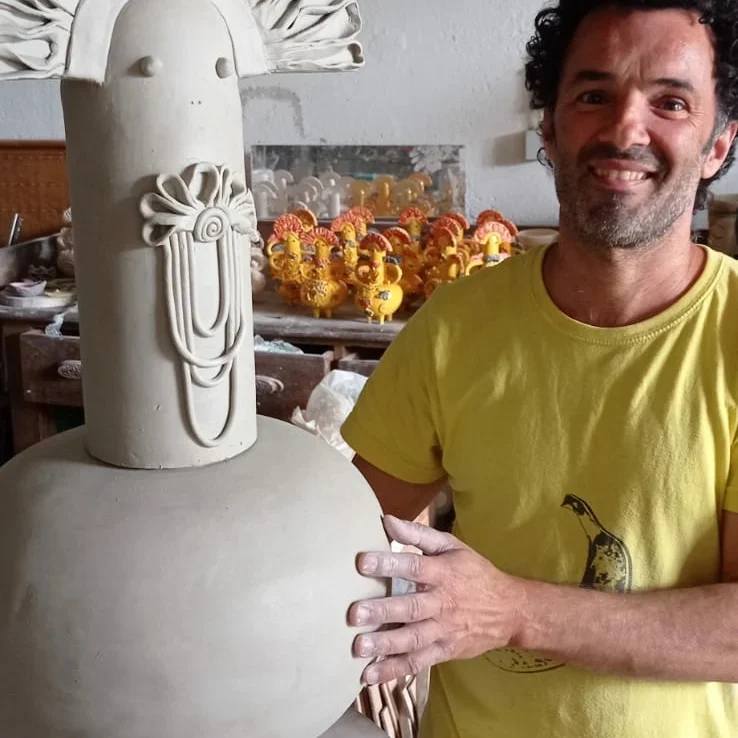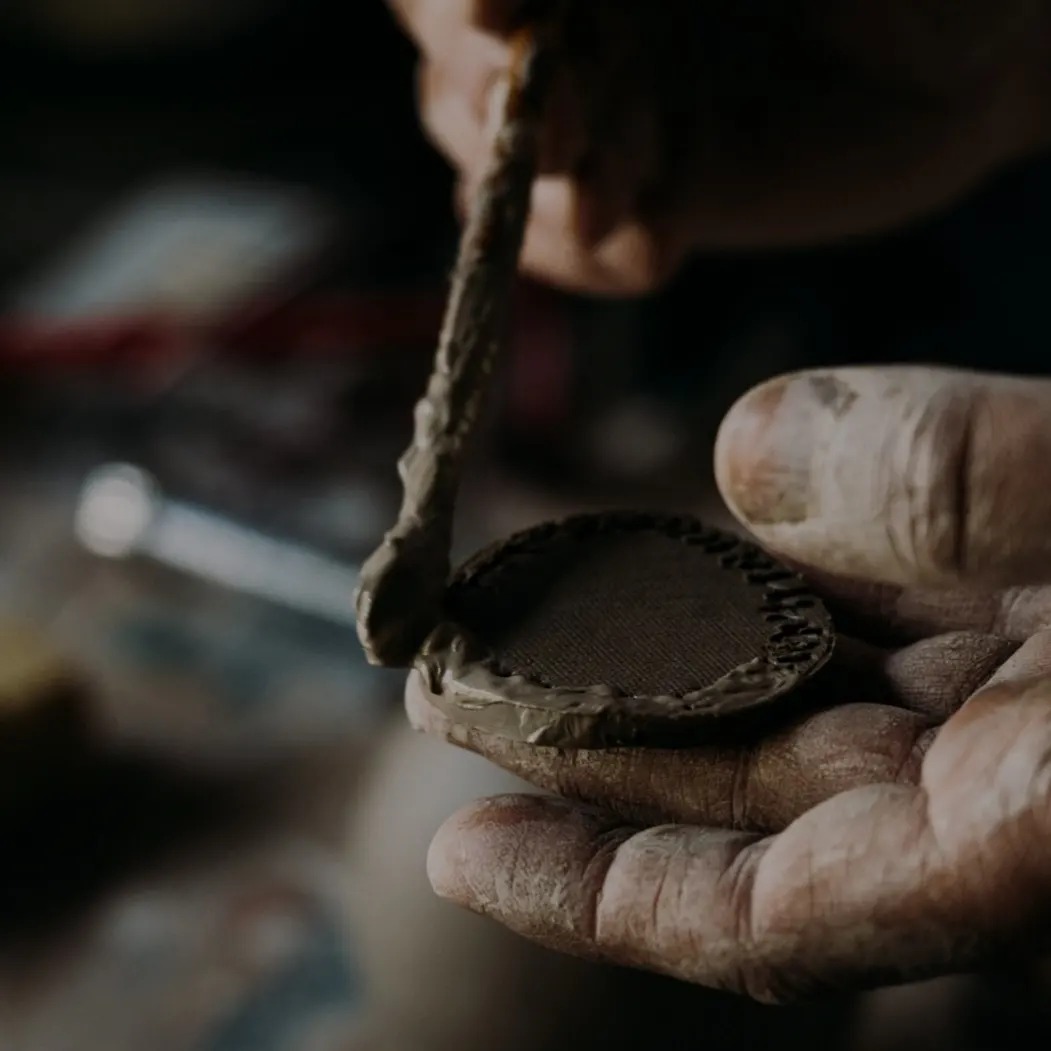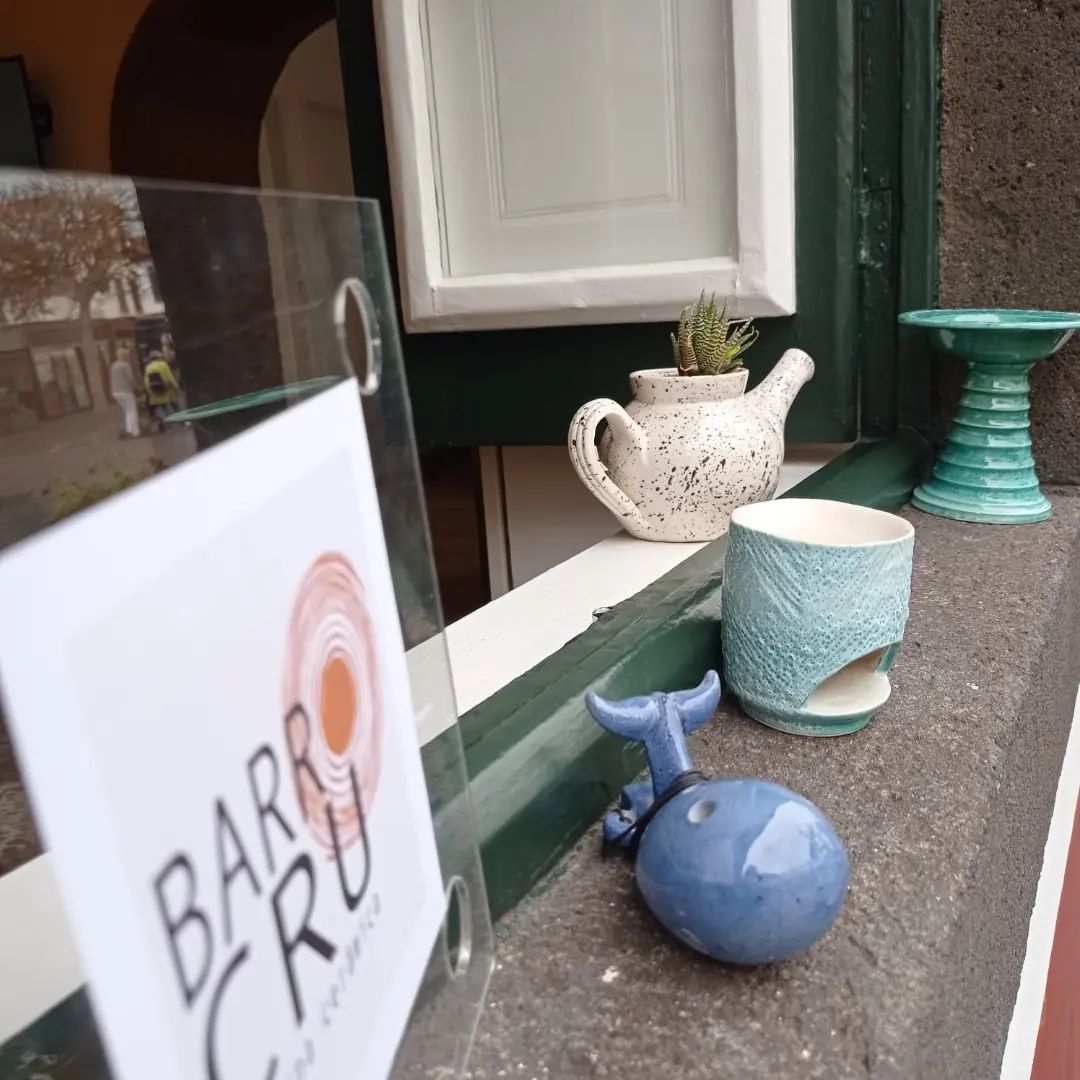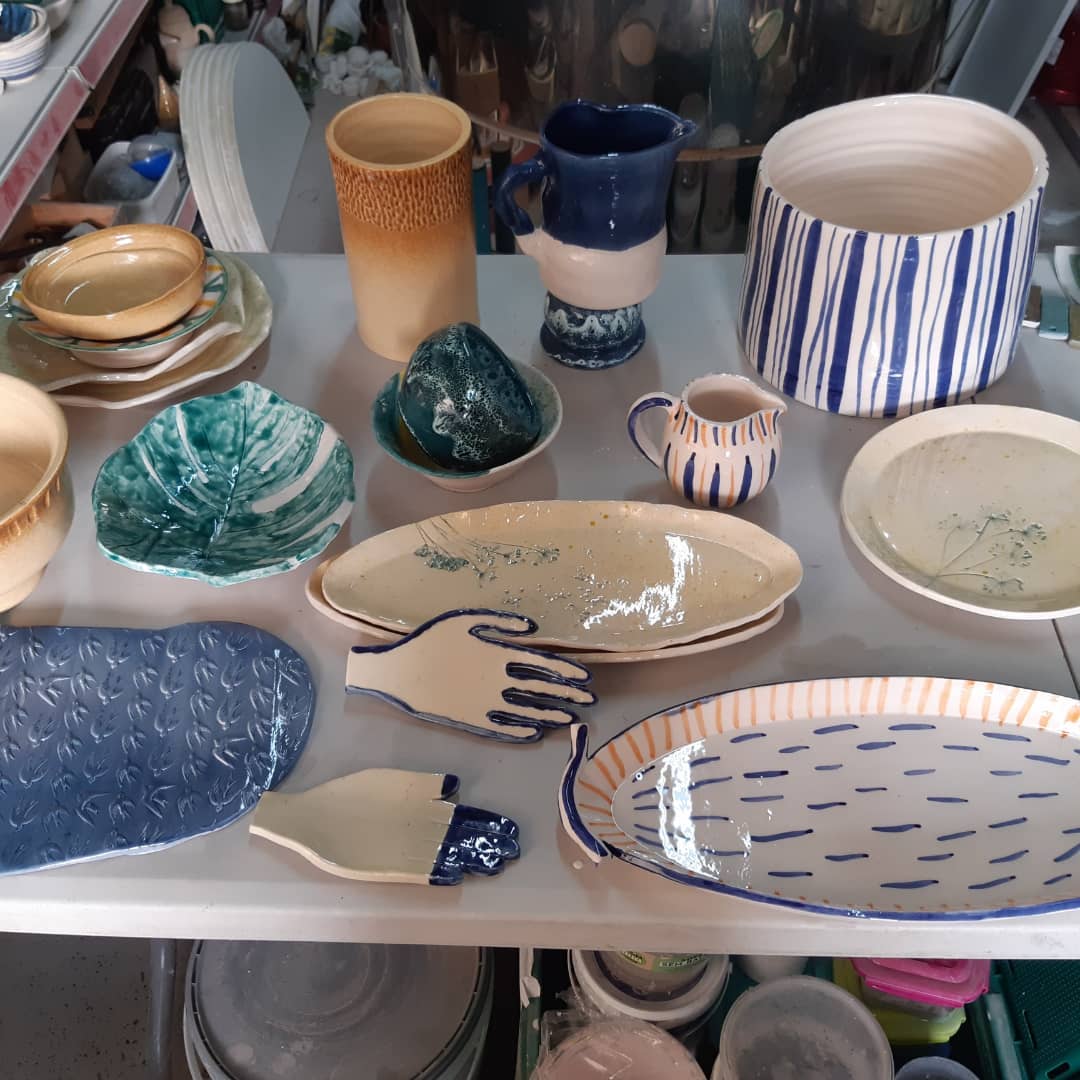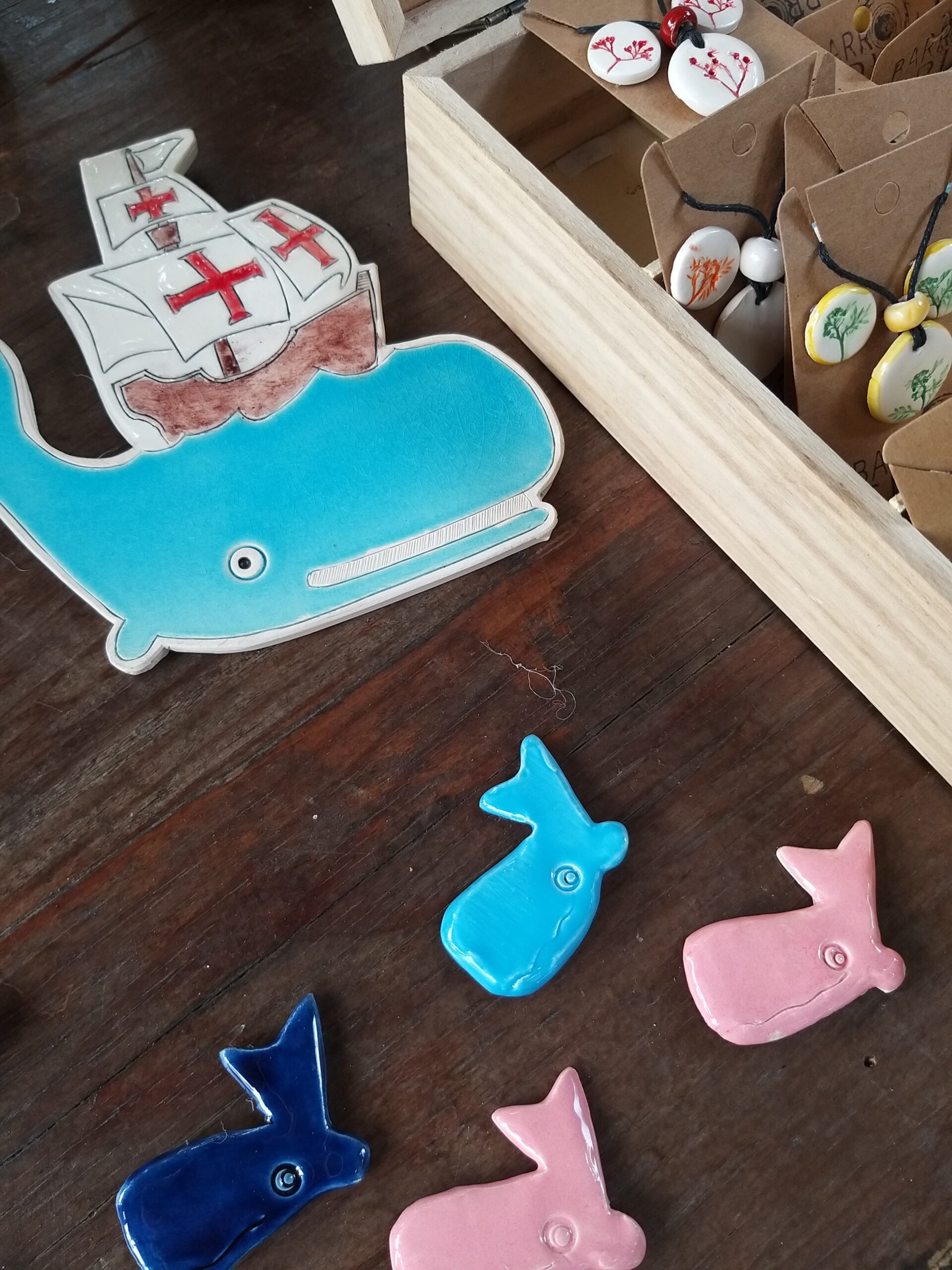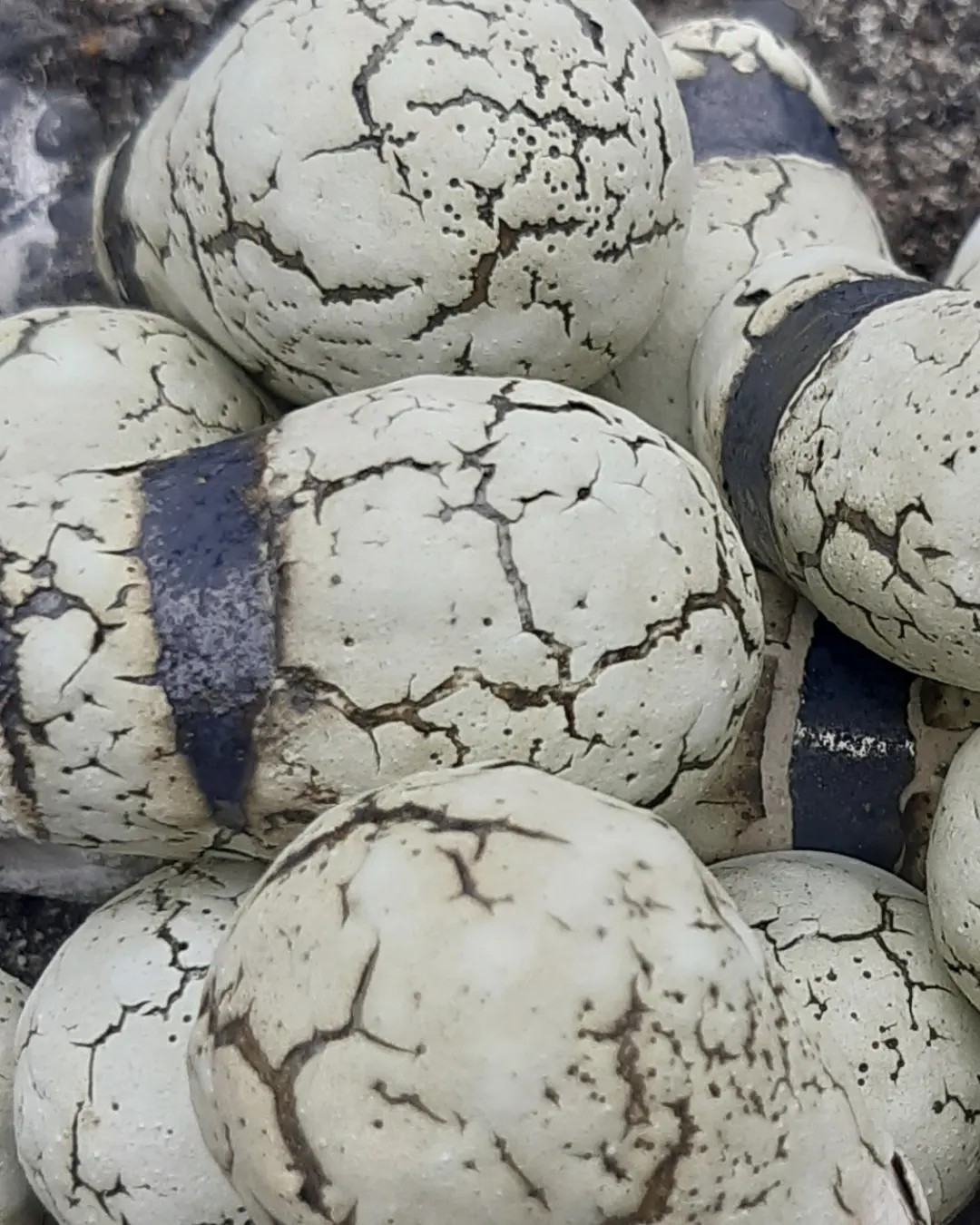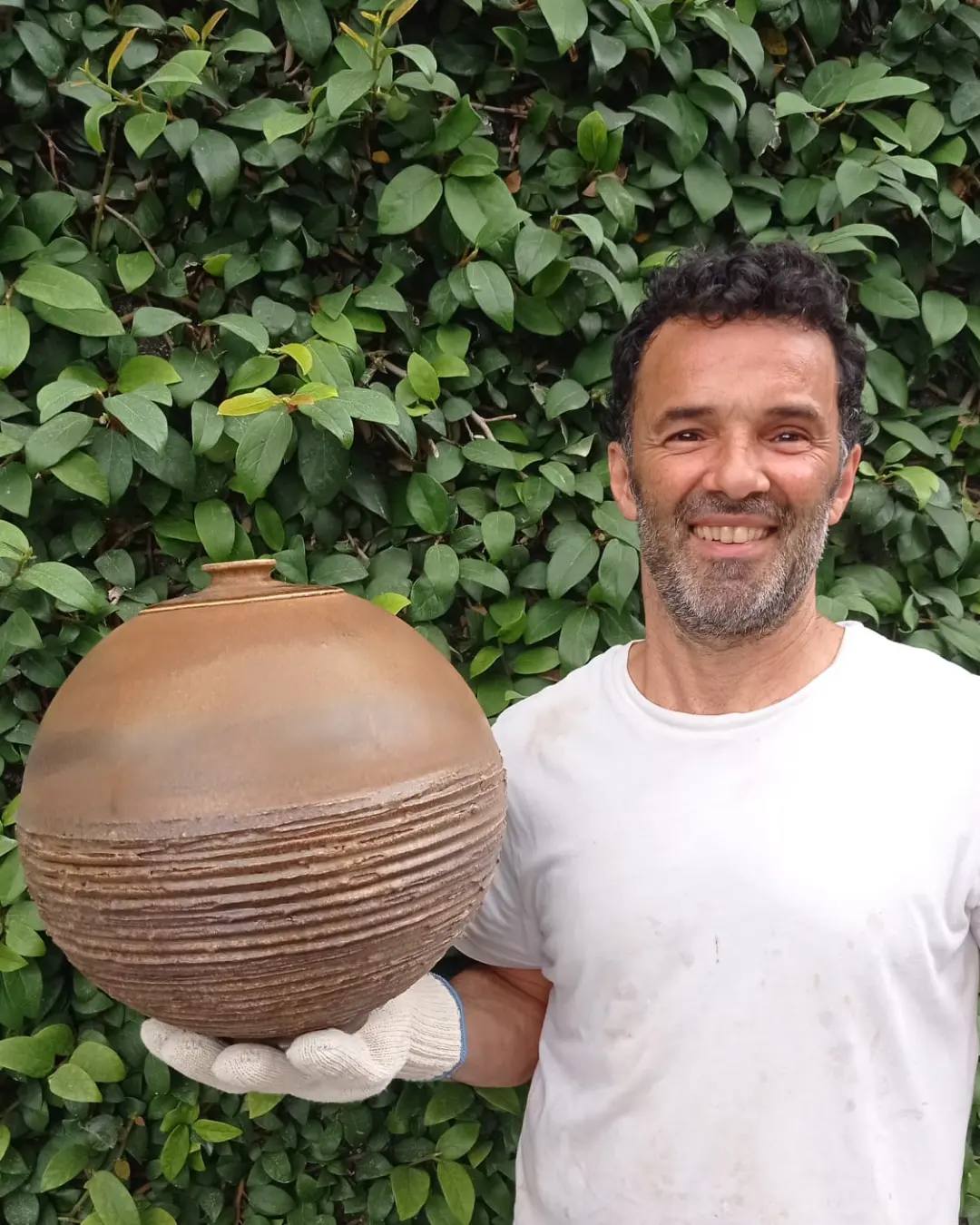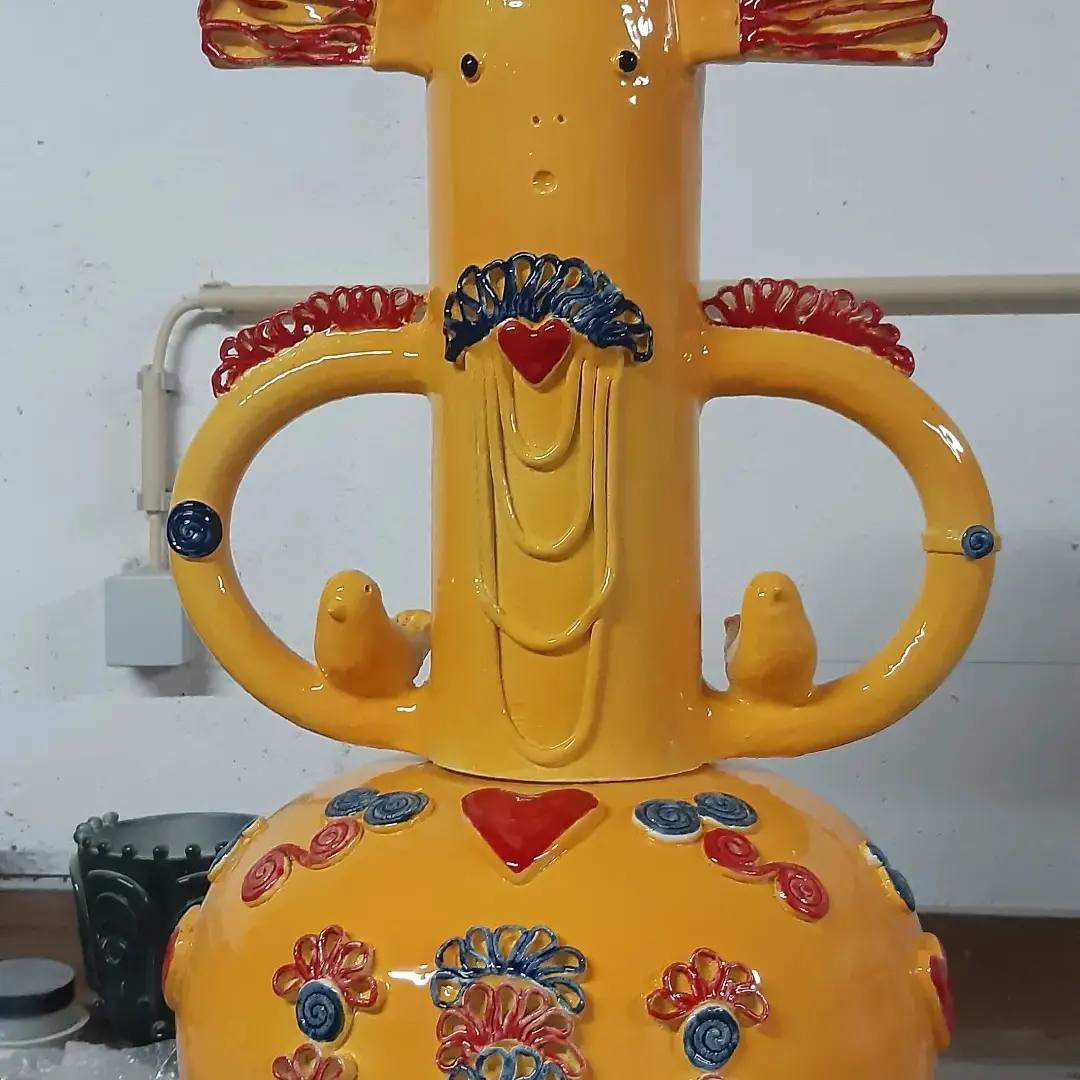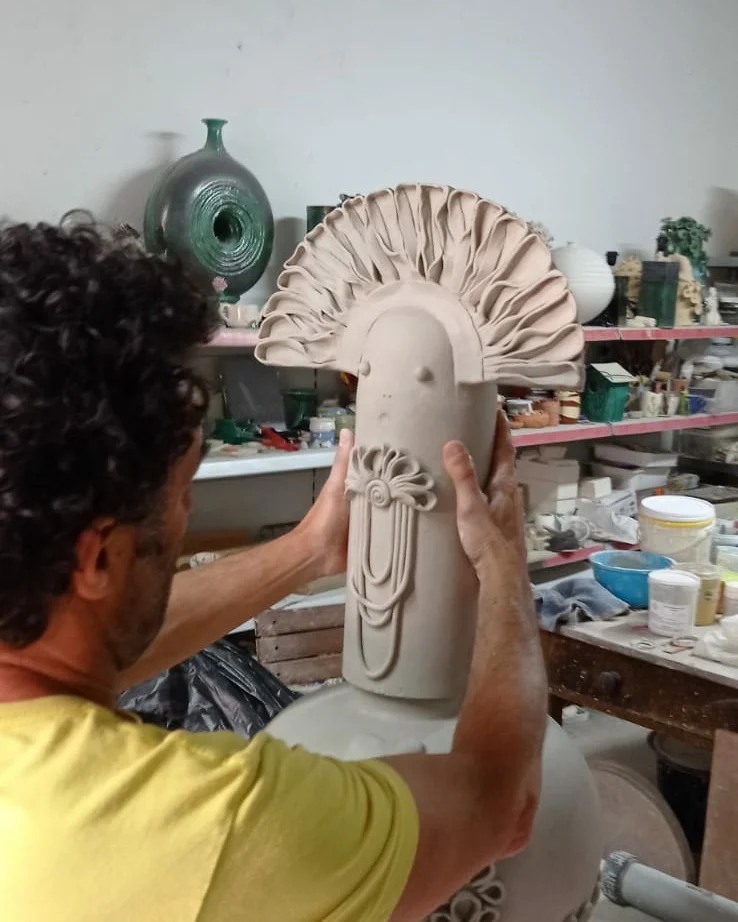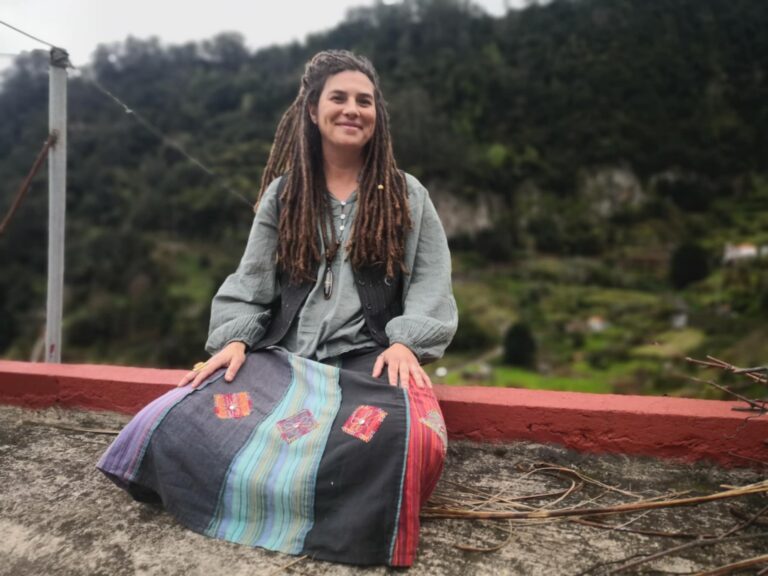He was always linked to arts even as a child. From childhood sketches to earthy textures, Miguel’s journey into ceramics wasn’t a sudden leap — it was a slow burn.
He started expanding his knowledge on ceramics when he travelled from Madeira to Alentejo when he was around 25. Since then, he’s built bridges between Madeira and the mainland, learning from master potters and shaping his own style along the way. Miguel doesn’t just make ceramics — he creates stories you can hold.
In 2008 Miguel Ramos started a technical course for ceramists and that decision left a permanent mark on him since that was when he decided he wanted to pursue ceramics. Not only did he travel a lot in the mainland due to some projects but he also left his footprint in Spain. After that he realized that what he needed was some professional experience in a ceramics atelier.
In 2014 he came back to Madeira and he realized that he didn’t want to live elsewhere. In 2015 he opened his first workshop in Quinta de Santa Luzia.
His work is based on pieces that either have a utilitarian function or are more decorative, such as tiles and sculpture.
From Clay to Soul
Doing ceramics is not only about the techniques but also about appreciating culture as it is and Miguel does that very easily. Whether it is a workshop in a museum, a display in touristic areas or other kinds of initiatives supported by the municipality of Funchal (Madeira) Miguel Ramos succeeds in bringing culture and art together as one in his works.
His brand is called Barro Cru and can be translated into “raw clay” which could in itself describe his intentions with his projects, that is how delicate and intentional he is with his pieces.
He fully puts his soul into his pieces.
By starting his own pottery studio in his hometown, Miguel exemplifies the kind of local entrepreneur who would not give up until he achieved his goals. Now he can immerse himself in his work and let the beautiful island serve as an inspiration.
The best part is that he is always motivated to teach everyone who is interested in learning his craft! He always shares whenever there are opportunities to do workshops at this workplace through his Facebook page.
Would you like to sometime teach your craft to the younger generations? Or have you already done that? What do you think are the biggest challenges to captivate them?
Yes, sometimes I go to schools to teach. In my workshop I promote some workshops and you can tell that yes, it is not difficult to teach but it requires some intelligence to motivate these new generations because there is so much technology and this work is very motoric and motor skills prevail and sometimes take a back seat for them.
Why did you choose ceramics?
I think it was the art that chose me actually, the clay… I saw the risk during the first time, I felt ceramics and it stays for the rest of your life, which was my case. The first time I felt this material I felt a connection and decided to pursue this path.
It was in 2001 that I started training and after then I have always been connected either as hobby or sometimes as a professional level and it is my full-time job for a couple of years now.
Do you think it is a sustainable art? Do you recycle some of the materials? How do you end up with the finished project?
It is sustainable giving the fact that the material is something from the nature. You can extract it from anywhere and then it is a sustainable material.
Have you always been interested in this craft? Was the interest in it motivated by your family?
I cannot say it was a generational thing but there was some influence from my grandfather’s side because he was a man who enjoyed crafts, he really enjoyed tools and wood. Since he was connected to handmade crafts and I grew up alongside him, he definitely influenced me.
Are there more people interested in your craft from the rural places rather than from the urban places?
The urban people are more often starting to appreciate these crafts, these ancestral arts.
What are the main challenges to keep your art alive in the digital era that we’re living in?
What I feel is more unloyal are these counterfeit materials that we see on our daily basis that end up devaluing my art. I get it, people go where the product is cheaper. In the past it wasn’t like this, we would buy something to last a life time. We would buy a mug and that mug would last generations.
Today if a mug breaks we go to the shop. If the shoes tear, we go to the shop. This way we lose a shoemaker and a potter. We lose a lot of things because of this spontaneous consumption.
Does social media bring advantages when it comes to promoting your art?
Yes, it helps promoting and creating new connections with other people. It is important.

